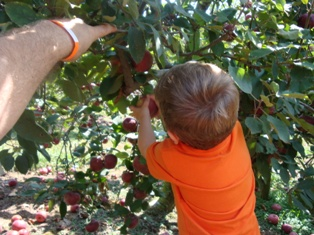Nutritional value of canned versus fresh: Is there a susbstantial difference in vitamins and mineral values of canned foods, compared to fresh?
This month's notes: March 2025: Stored US apples are still available. See your state's crop availability calendar for more specific dates of upcoming crops.
Valentine's Day - February 14 - See this website for Valentines Day history, facts and top picks for fast, easy, inexpensive gifts for the man, woman or children in your life!
Easter will be April 16, 2017 - if you want to take your children to a free Easter egg hunt - see our companion website to find a local Easter Egg hunt!
And we have home canning, preserving, drying and freezing directions. You can access recipes and other resources from the drop down menus at the top of the page or the site search. If you have any questions or suggestions, feel free to write me! Also make your own ice cream; see How to make ice cream and ice cream making equipment and manuals. Have fun, eat healthier and better tasting, and save money by picking your own locally grown fruit and vegetables, and then using our easy directions
 Subscribe
to our: Email
alerts; Follow us on Twitter
Add
this page to your favorites! -
Email this page to a friend, or to yourself
Subscribe
to our: Email
alerts; Follow us on Twitter
Add
this page to your favorites! -
Email this page to a friend, or to yourself
The nutritional value of fresh fruits and vegetables versus commercially canned, home-canned and frozen foods has been debated in the media, but there has actually been research and credible studies from major universities that provides a factual, objective analysis. While fresh, local vegetables, eaten soon after harvest, and properly stored at cool temperatures between harvest and consumption are the ideal, that does not mean there is substantial difference in actual nutritional content between fresh and canned, including home canned
The Findings: Nutritional Content of Fresh Fruits and Vegetables Compared with Canned
The University of Minnesota Extension says:
Many vegetables begin to lose vitamins when harvested. Nearly half the vitamins may be lost within a few days unless the fresh produce is cooled or preserved. Within one to two weeks, even refrigerated produce may lose half of its vitamins. The heating process during canning destroys from 1/3 to 1/2 of vitamins A and C, thiamin, and riboflavin. Once canned, additional losses of these sensitive vitamins are from 5 to 20 percent each year depending on storage conditions. The amounts of other vitamins, however, are only slightly lower in canned compared with fresh food. Vegetables handled properly and canned promptly after harvest may be more nutritious than fresh produce held many days after harvest under abusive conditions.
The University of Illinois conducted an exhaustive scientific study in 1997on this very subject. click here for the study's finding website.
The UI Extension's summary is:
From a scientific standpoint, the results obtained in the second study confirm our findings from the 1995 analysis. Although the databases differed somewhat, the values for concentrations of nutrients were very similar. The percentages are somewhat altered because some of the RDIs and DRVs used in the current analysis were slightly different. The expanded lists provide a different array of foods legumes and poultry/fish and some additional nutrients. Regardless of which food and what nutrients we examine, the bottom line is the same. Canned foods are an excellent alternative to fresh and frozen, because they provide the nutrients we expect from any specific food group.
What to do to maximize the nutritional value of home canned foods
Home canning recipes found in the Ball Blue Book, the USDA and on my websites were developed with extensive lab testing to find the optimal conditions to preserve flavor, nutrtion and ensure safety. The nutritional content of home canned foods, when high quality, fresh produced is used and the directions are followed, preserves nutritional content such that it is very close to fresh.
This publication, from the University of Californ - Davis (UC Davis) provides tips on how to maximize the nutritional value of fruits and vegetables. They point out that some vitamins (like Vitamin C) are more susceptible to loss during storage and with exposure to heat than others, and that the length of time from harvest to either consumptions or canning is one of the most important factors in nutritional content of the food as it is finally consumed.
In regard to home canning, Ohio State University Extension says:
For best results, select only fresh, young, tender vegetables, and can them within three hours of harvesting. If canning takes place later, place the produce in the refrigerator to keep it fresh. Rinse all produce thoroughly. Soaking vegetables will cause loss of flavor and nutrients. Handle gently to avoid bruising.
Conclusion:
UC Davis concludes:
Research shows that by the time a fruit or vegetable is consumed, fresh, frozen, and canned versions may be nutritionally similar, depending on the postharvest handling and processing treatments.
Picking Tips
[General picking tips and a guide to each fruit and vegetable] [How
much do I need to pick?
(Yields - how much raw makes how much cooked or frozen)] [Selecting
the right varieties to pick] [All
about apple varieties - which to pick and why!] [Picking tips for Vegetables]
[ Strawberry picking tips]
[ Blueberries picking tips]

Illustrated Canning, Freezing, Jam Instructions and Recipes
[ Easy Home Canning Directions] [FAQs - Answers to common questions and problems] [Recommended books about home canning, jam making, drying and preserving!] [Free canning publications to download and print]


